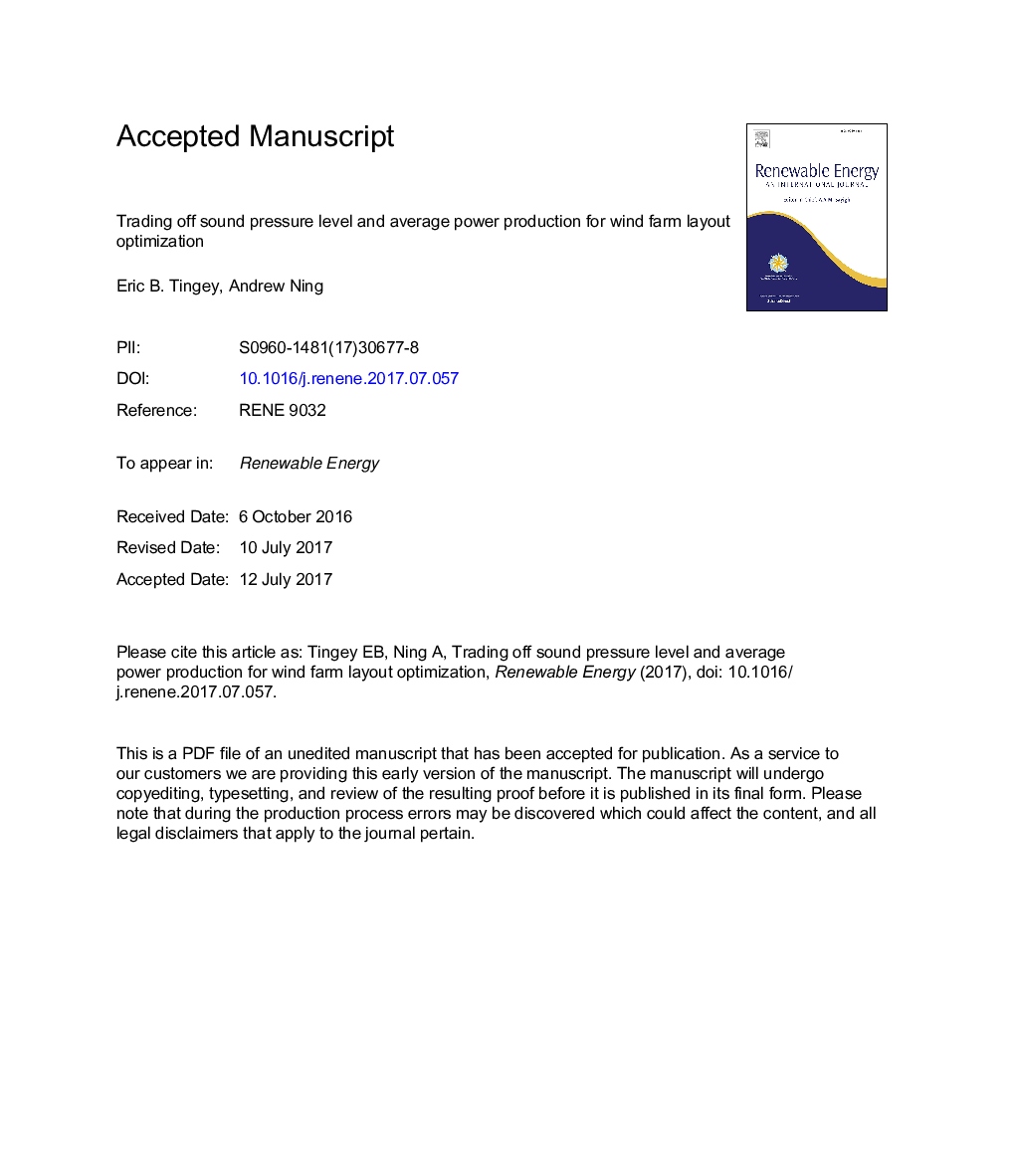| Article ID | Journal | Published Year | Pages | File Type |
|---|---|---|---|---|
| 4926173 | Renewable Energy | 2017 | 30 Pages |
Abstract
This research explores the trade-offs between a wind farm's average power production and noise impact on nearby observers. Two specific wind farm designs were studied and optimized using the FLORIS wake model and an acoustic model based on semi-empirical turbine noise calculations. It was found in the two wind farms that the average power production could be increased, up to 8.01% in one and 3.63% in the other, ignoring sound level considerations. Including a noise restriction in the optimization had a minimal impact on the optimal average power production within about a five-decibel range. Past this range, sound limitations decreased the wind farm's power production significantly. By analyzing average power production and sound pressure level together, we can take advantage of the multi-modality of the optimization to find solutions were noise impact can be improved with an insignificant effect on power production.
Keywords
Related Topics
Physical Sciences and Engineering
Energy
Renewable Energy, Sustainability and the Environment
Authors
Eric B. Tingey, Andrew Ning,
